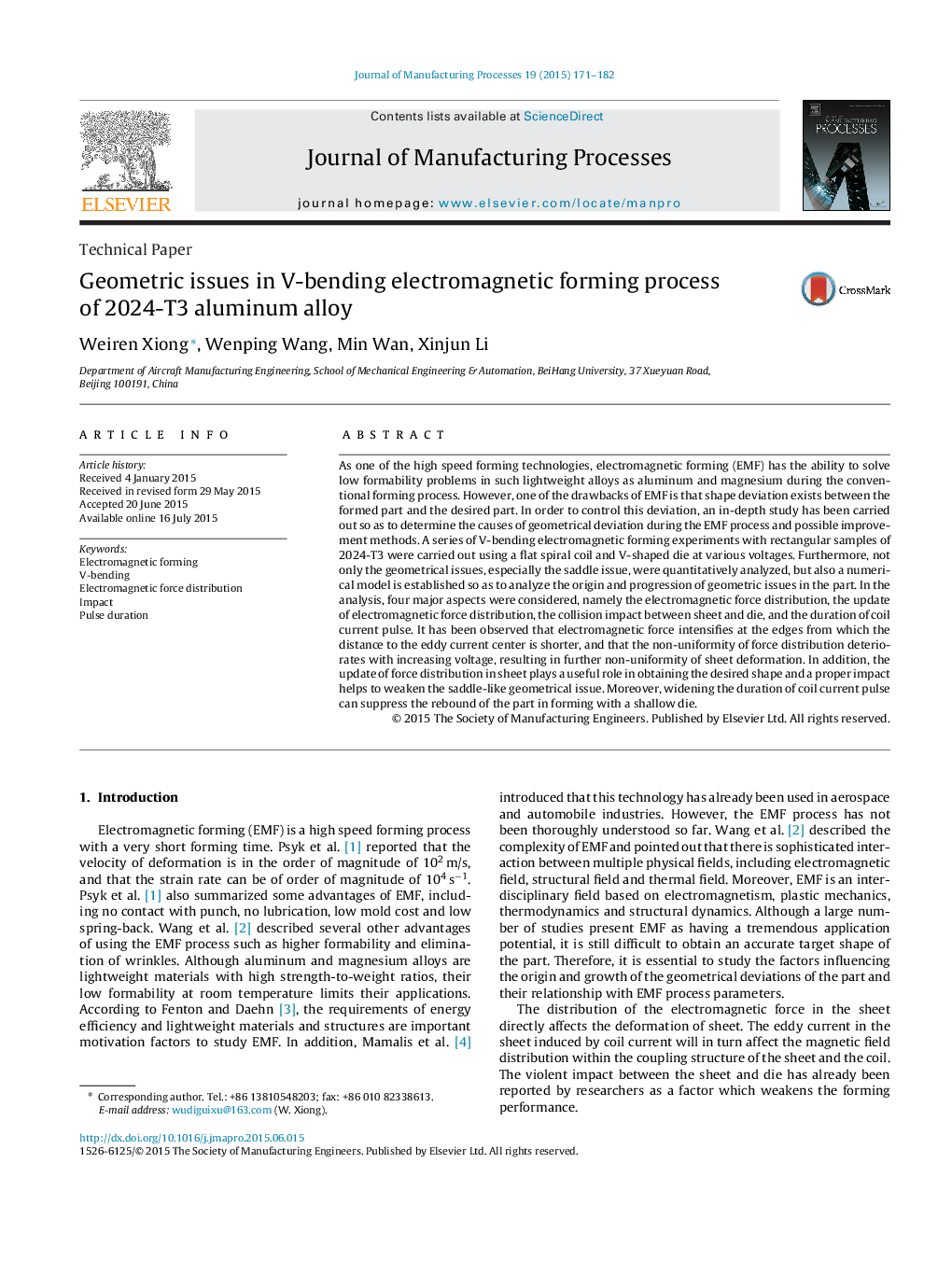| Article ID | Journal | Published Year | Pages | File Type |
|---|---|---|---|---|
| 1696964 | Journal of Manufacturing Processes | 2015 | 12 Pages |
•We quantificationally evaluated the geometric issues of parts and the way of them changing with voltage.•The way of the non-uniform force distribution which causes the geometric issues being determined by the coupling structure.•The non-uniformity of distribution of eddy current and force intensifies with voltage.•The way of the update of the force distribution and the collision impact affecting the geometric characteristics.
As one of the high speed forming technologies, electromagnetic forming (EMF) has the ability to solve low formability problems in such lightweight alloys as aluminum and magnesium during the conventional forming process. However, one of the drawbacks of EMF is that shape deviation exists between the formed part and the desired part. In order to control this deviation, an in-depth study has been carried out so as to determine the causes of geometrical deviation during the EMF process and possible improvement methods. A series of V-bending electromagnetic forming experiments with rectangular samples of 2024-T3 were carried out using a flat spiral coil and V-shaped die at various voltages. Furthermore, not only the geometrical issues, especially the saddle issue, were quantitatively analyzed, but also a numerical model is established so as to analyze the origin and progression of geometric issues in the part. In the analysis, four major aspects were considered, namely the electromagnetic force distribution, the update of electromagnetic force distribution, the collision impact between sheet and die, and the duration of coil current pulse. It has been observed that electromagnetic force intensifies at the edges from which the distance to the eddy current center is shorter, and that the non-uniformity of force distribution deteriorates with increasing voltage, resulting in further non-uniformity of sheet deformation. In addition, the update of force distribution in sheet plays a useful role in obtaining the desired shape and a proper impact helps to weaken the saddle-like geometrical issue. Moreover, widening the duration of coil current pulse can suppress the rebound of the part in forming with a shallow die.
